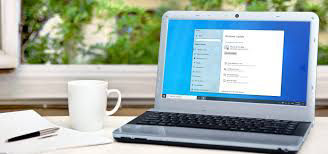How to Speed Up Your PC: 10 Simple Tips That Actually Work

Covered by the media hkitblog.com Is your computer running slower than it used to? Whether you’re on Windows 10, Windows 11, or even the new Windows 12, slow performance can be frustrating—especially when you need to get things done. The good news? You don’t need to be a tech expert to speed up your PC.
Here are 10 proven and beginner-friendly ways to make your PC faster in 2025.
1. Disable Startup Programs
Many apps start running as soon as you boot your PC—slowing things down.
How to fix it (Windows 10/11/12):
- Press Ctrl + Shift + Esc to open Task Manager
- Go to the Startup tab
- Disable programs you don’t need at startup (e.g., Spotify, Teams, Zoom)
✅ Only keep essential items like antivirus or system tools.
2. Clean Up Your Disk
Over time, temporary files, old installers, and browser caches eat up space.
Use Windows’ built-in Disk Cleanup:
- Type Disk Cleanup in the Start Menu
- Choose your drive (usually C:)
- Select temporary files, thumbnails, system files, etc.
- Click OK and then Delete Files
3. Uninstall Unused Software
Programs you don’t use anymore might still run background processes.
How to remove them:
- Go to Settings > Apps > Installed Apps
- Sort by size or date
- Remove anything you no longer use (toolbars, games, trial software)
4. Use an SSD (Solid-State Drive)
Still using a traditional hard drive? Upgrading to an SSD can dramatically speed up your boot times and app loading.
Even budget SSDs in 2025 are 10x faster than spinning disks. Consider cloning your old drive onto a new SSD for best results.
Upgrade Your RAM
If your PC often lags when running multiple apps, more memory might be the fix.
- 8GB is okay for basic use
- 16GB is ideal for multitasking, office, and creative work
- 32GB+ is great for gaming or video editing
RAM upgrades are often the most cost-effective performance boost.
6. Adjust Visual Effects
Windows’ animations look good, but they consume system resources.
To disable:
- Press Windows + R, type sysdm.cpl, press Enter
- Go to Advanced > Performance > Settings
- Choose Adjust for best performance (or customize)
7. Restart Your PC Regularly
It may sound obvious, but many users leave their PCs in sleep mode for days or weeks. Restarting helps clear out RAM and background processes.
⏱️ Reboot at least once every few days for a smoother experience.
8. Run a Malware Scan
Viruses and unwanted software (like cryptominers or adware) can severely slow down your system.
Use antivirus tools like:
- Microsoft Defender (free, built-in)
- Bitdefender, Norton, or Malwarebytes (more advanced)
Run a full scan and remove any threats.
9. Keep Windows & Drivers Updated
Outdated software can lead to bugs, slowdowns, and compatibility issues.
Do this:
- Open Settings > Windows Update
- Install available updates
- Also update GPU drivers (especially for gamers via NVIDIA/AMD apps)
10. Use a PC Optimization Tool (Optional)
Tools like:
- CCleaner (basic cleaner, registry fix)
- Advanced SystemCare
- Glary Utilities
These can help automate some of the cleanup tasks—just avoid overusing registry cleaners, and always back up before cleaning.
Bonus Tip: Keep Your Desktop Clean
Each icon on your desktop consumes memory at startup. Keeping your desktop minimal can shave off boot time and improve stability.
You don’t need a new PC to enjoy better speed—just a little maintenance goes a long way. From cleaning up junk files to upgrading hardware, these simple tweaks can make your computer feel new again in 2025.
Source: https://hkitblog.com/
![HITV APP Download [Apk] Latest Version [Unlimited Movies]](https://hitvofficial.com/wp-content/uploads/2024/06/cropped-HiTV-Official-3.png)